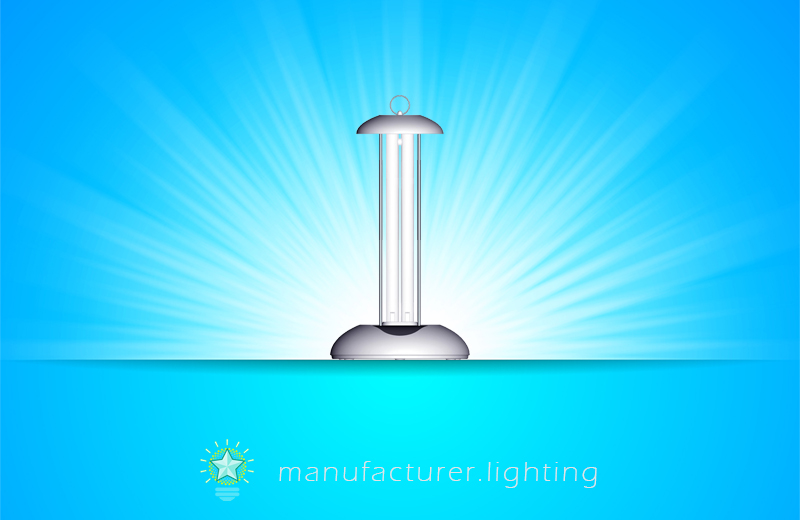
UV germicidal lamps are widely applied to air and water sterilization, surface contaminant removal, and medical applications. Ultraviolet radiation, also known as ultraviolet light, is invisible electromagnetic radiation of the same nature as visible light, but possessing shorter wavelengths and higher energies. UV light irradiation is known for a wide antiseptic function and can kill all sorts of microbes. UV light covers wavelengths ranging from about 190 to approximately 420 nanometers and is classified into three wavelength ranges: UV-C, from about 190 nanometers (nm) to about 280 nm; UV-B, from about 280 nm to about 315 nm; and UV-A, from about 315 nm to about 400 nm. The sterilization working principle of UV radiation is to make the microbial nucleic acids, protoplasmic proteins, as well as enzymes die in chemical changes following absorbing UV energy. In particular, UV-C light causes damage to the nucleic acid of microorganisms by developing covalent bonds between specific adjacent bases in the DNA. This effectively leads to sterilization of the microorganisms, which provides reason to the employment of ultraviolet light technology for disinfecting and/or sterilizing items. The germ killing effectiveness of UV lamps is a function of total UV energy exposure that is the mathematical product of intensity (power per unit area) and time. Germicidal lamps have excellent performance when it comes to antibiosis, anti-dust, purification, and sterilization, hence its application area has been extended to home electronic appliances, including air purifiers, water purifiers, refrigerators, air conditioners and dish washers, and medical appliances. A light emitting diode (LED) can produce light in a much more efficient manner as opposed to conventional light sources. With low energy consumption and longer lifespan when compared to incandescent lamps, mercury-vapor lamps, or fluorescent lamps, applications of light emitting diodes have expanded to shorter wavelength applications.
